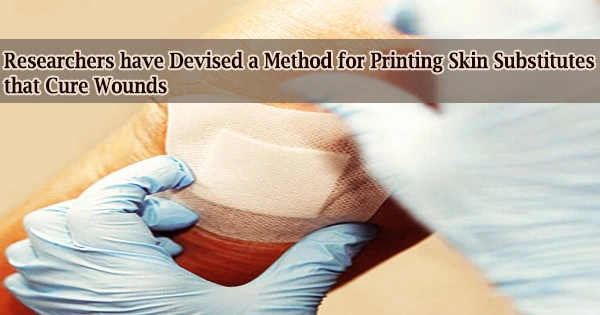Chronic wounds are deep and challenging to heal. The wound collapses in on itself when the top of the injury heals before the bottom. This can lead to scar formation and decreased skin function over time.
Researchers from the University of Birmingham and the University of Huddersfield devised a method to print skin analogues, which was published in APL Bioengineering by AIP Publishing. The substance has the potential to aid in the healing of chronic wounds in the future.
The technology is the first of its type to imitate the hypodermis, or fatty layer, the dermis, and the epidermis, three layers of skin.
“You effectively have three different cell types. They all grow at different speeds,” said author Alan Smith. “If you try to produce tri-layered structures, it can be very difficult to provide each of the requirements of each different layer.”
The scientists employed suspended layer additive manufacturing (SLAM) to overcome this challenge. They generated a gel-like material to support the skin’s equivalent, twisting and modifying the gel’s structure as it formed to create a bed of particles that can then support a second gel injection phase.
We used a stain that allowed us to quantify the integration we got between original material and tissue. We were able to demonstrate some integration even after a short period of time.
Liam Grover
The skin layers are deposited within the support gel during printing, which holds everything in place. The crew rinsed away the support material after printing, leaving behind the layered skin equivalent.
The researchers discovered that moving a needle through the supporting gel caused it to mend itself more quickly than other similar procedures. This enables for greater resolution printing than earlier approaches, as well as printing of complex skin structures.
The skin substitute was put to the test by cutting a hole in pig tissue and printing a skin substitute to fill it. They found symptoms of wound repair after 14 days of cultivating the model system.
“We used a stain that allowed us to quantify the integration we got between original material and tissue,” said author Liam Grover. “We were able to demonstrate some integration even after a short period of time.”
The scientists can’t use the skin substitute to analyze chronic wound healing because it takes longer than their model allows, which is only 14-21 days.
Their next step, however, will be to test longer, more appropriate models for persistent deep wounds. For all patient settings, the ultimate goal is to restore human skin and decrease scarring.





